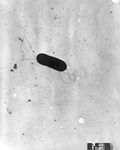Listeria
Listeria is a genus of bacteria that, until 1992, contained 10 known species, each containing two subspecies. As of 2020, another five species were identified. Named after the British pioneer of sterile surgery Joseph Lister, the genus received its current name in 1940. Listeria species are Gram-positive, rod-shaped, and facultatively anaerobic, and do not produce endospores.
Characteristics[edit]
The major human pathogen in the Listeria genus is Listeria monocytogenes. It is usually the causative agent of the relatively rare bacterial disease listeriosis, a serious infection caused by eating food contaminated with the bacteria. The disease affects primarily pregnant women, newborns, older adults, and adults with weakened immune systems. It is a serious disease in those with a weakened immune system and is rarely found in people otherwise healthy. In the European Union listeriosis is on the rise, with 2,161 confirmed cases in 2014 and 2,206 confirmed cases in 2015.
Pathogenesis[edit]
Listeria monocytogenes is a pathogen commonly found in various raw food products, soil, plants and even in animals. Listeria is responsible for listeriosis, a serious infection for humans; the overt form of the disease has a case-fatality rate around 20%. The two main clinical manifestations are sepsis and meningitis. Meningitis is often complicated by encephalitis, a pathology not usually seen in other causes of bacterial meningitis. Listeria ivanovii is a pathogen of mammals, specifically ruminants, and has rarely caused listeriosis in humans.
Treatment[edit]
Listeriosis treatment involves intravenous delivery of antibiotics and, depending on the severity of the infection, may require the removal of dead tissue. The most effective treatment for listeriosis is early diagnosis followed by antibiotics.
See also[edit]
References[edit]
<references />
Ad. Transform your life with W8MD's Budget GLP-1 injections from $75


W8MD offers a medical weight loss program to lose weight in Philadelphia. Our physician-supervised medical weight loss provides:
- Weight loss injections in NYC (generic and brand names):
- Zepbound / Mounjaro, Wegovy / Ozempic, Saxenda
- Most insurances accepted or discounted self-pay rates. We will obtain insurance prior authorizations if needed.
- Generic GLP1 weight loss injections from $75 for the starting dose.
- Also offer prescription weight loss medications including Phentermine, Qsymia, Diethylpropion, Contrave etc.
NYC weight loss doctor appointmentsNYC weight loss doctor appointments
Start your NYC weight loss journey today at our NYC medical weight loss and Philadelphia medical weight loss clinics.
- Call 718-946-5500 to lose weight in NYC or for medical weight loss in Philadelphia 215-676-2334.
- Tags:NYC medical weight loss, Philadelphia lose weight Zepbound NYC, Budget GLP1 weight loss injections, Wegovy Philadelphia, Wegovy NYC, Philadelphia medical weight loss, Brookly weight loss and Wegovy NYC
|
WikiMD's Wellness Encyclopedia |
| Let Food Be Thy Medicine Medicine Thy Food - Hippocrates |
Medical Disclaimer: WikiMD is not a substitute for professional medical advice. The information on WikiMD is provided as an information resource only, may be incorrect, outdated or misleading, and is not to be used or relied on for any diagnostic or treatment purposes. Please consult your health care provider before making any healthcare decisions or for guidance about a specific medical condition. WikiMD expressly disclaims responsibility, and shall have no liability, for any damages, loss, injury, or liability whatsoever suffered as a result of your reliance on the information contained in this site. By visiting this site you agree to the foregoing terms and conditions, which may from time to time be changed or supplemented by WikiMD. If you do not agree to the foregoing terms and conditions, you should not enter or use this site. See full disclaimer.
Credits:Most images are courtesy of Wikimedia commons, and templates, categories Wikipedia, licensed under CC BY SA or similar.
Translate this page: - East Asian
中文,
日本,
한국어,
South Asian
हिन्दी,
தமிழ்,
తెలుగు,
Urdu,
ಕನ್ನಡ,
Southeast Asian
Indonesian,
Vietnamese,
Thai,
မြန်မာဘာသာ,
বাংলা
European
español,
Deutsch,
français,
Greek,
português do Brasil,
polski,
română,
русский,
Nederlands,
norsk,
svenska,
suomi,
Italian
Middle Eastern & African
عربى,
Turkish,
Persian,
Hebrew,
Afrikaans,
isiZulu,
Kiswahili,
Other
Bulgarian,
Hungarian,
Czech,
Swedish,
മലയാളം,
मराठी,
ਪੰਜਾਬੀ,
ગુજરાતી,
Portuguese,
Ukrainian





